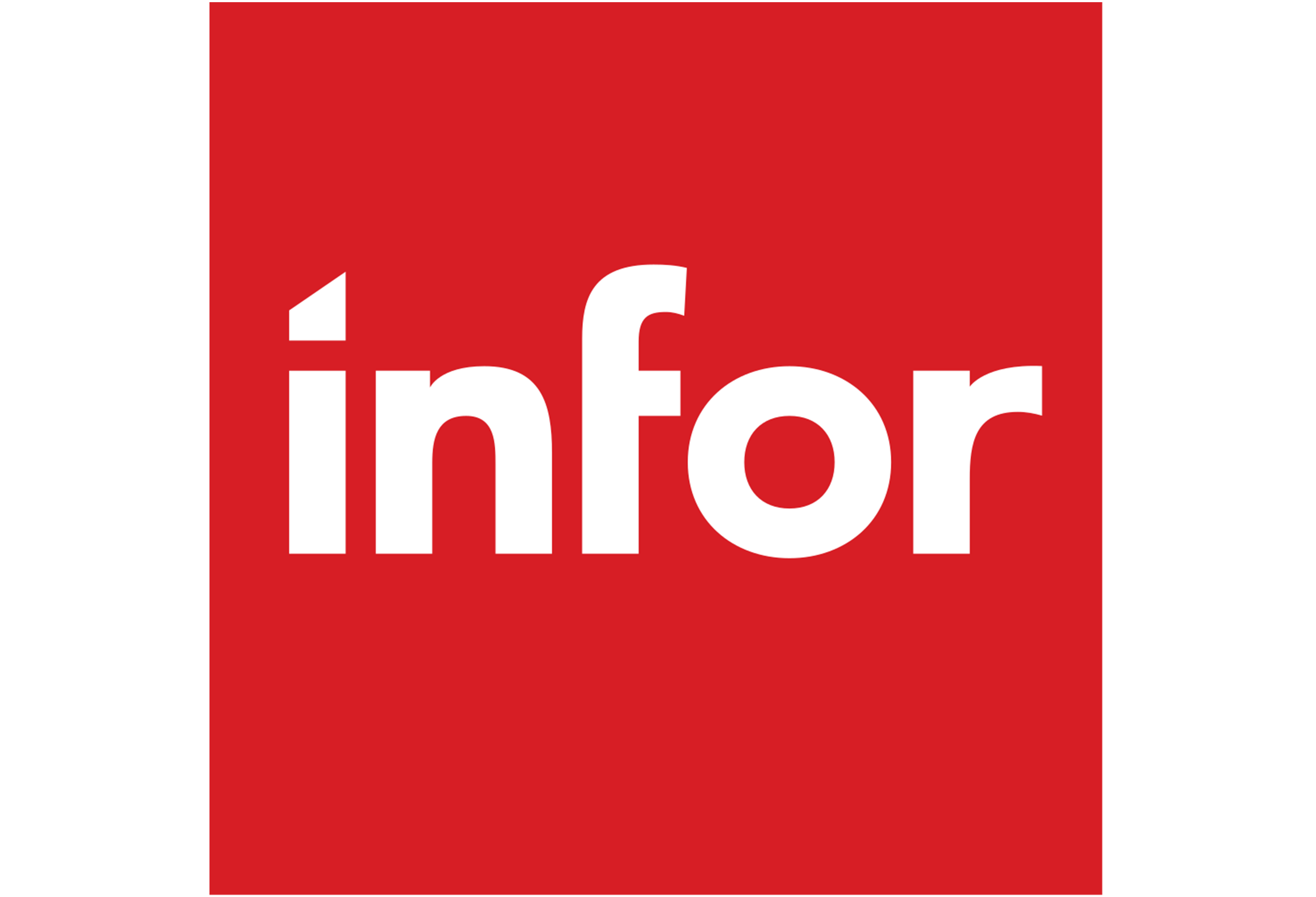
Article by Fabio Tiviti, Vice President, ASEAN, Infor
Food and beverage companies have long struggled with the unique requirements of shelf life management, complexities of batch scheduling, traceability, and many other factors. In addition, uncertainties around tariffs, sustainability initiatives, and growing regulations are some of a multitude of dynamics that will surely add even more complexity to the mix. Many of these issues and trends can have a profound impact on your entire supply chain—from procurement to manufacturing to delivery.
In a recent Infor-sponsored webinar, Infor segmented a number of challenges related to supply chain complexities in the food and beverage industry into three buckets; gain global visibility, predict and respond to volatility, and embrace the best technology.
Gain global visibility
We all tend to limit our focus to the variables within our control, however, it’s time to rethink all supply chain processes because they are not as efficient as they need to be. We did a survey of the companies that were on the Infor Nexus network, about two years ago, and what we found is that about 46% of them said that prior to implementing Infor Nexus it took them as long as three days to identify where a product were, and when it was going to be available. Very clearly the data is not available to help us make good decisions. On top of that, there are gaps for how manufacturers connect with customers, suppliers and carriers outside of the enterprise, whether it be multiple point-to-point EDI connections, portals, spreadsheets, emails—the list is almost endless—and very difficult to maintain.
In order to gain visibility, you need to be connected to your global trading partners in a meaningful way. With a multi-enterprise business network you’ll be able to remove silos not only inside your organization but between your organization and the people it does business with. It enables the capturing and sharing of real-time data to improve efficiency and overall business responsiveness.
Predict and respond to volatility
How do you predict and respond to volatility? This can start with the fundamental area of efficiency and automation on the plant floor. How do you optimize your production schedule? How can you do a better job at dealing with the various bottlenecks, whether it’s tanks in your operation, or various speeds within your filling lines?
Scheduling tools that consider all variables in order to optimize production is merely one part of the answer. When you also bring a solution for asset management into your business and integrate that with your scheduling solution, you get a better understanding of how to plan around maintenance windows based on having better visibility of what the real equipment needs are. Production scheduling and asset management impact your supply chain and your ability to deliver and they shouldn’t be handled as separate silos.
When it comes to efficiency and automation there’s also the challenge of optimizing an enterprise’s transportation and warehousing and understanding the complexities of doing that as the channels to market evolve. Whether your company does its own e-commerce, or you’re working with an e-commerce vendor to deliver products, some of the capabilities and requirements change and more and more companies are looking closer at all the tools out there to help them be more efficient.
Improving efficiency has been a driver in the food industry for decades but one of the most volatile areas lately has been the focus on sustainability and transparency. What consumers are seeking constantly changes marketplace’s requirements. Originally it was fat free or GMO free or similar. In the last few years, it’s moved more into cleaner labels since consumers want to easily understand what’s on the ingredient statement. And now this trend is expanding further. Sustainability claims today can include the farm health, the sustainability of the raw materials you are using, energy use, minimizing the use of plastics and wasting less packaging. Infor has a number of customers focused on measuring and reporting on sustainability metrics. One of them is addressing the fundamental question of how to feed the growing world population in a sustainable method. Part of that means rolling out a global solution to help them embrace a more efficient supply chain.
Each company may have different objectives and needs and its own ways to attack the sustainability issue. For some companies it means doing a better job at tracing and tracking back to raw materials, for others it entails doing a better job at measuring its carbon footprint or managing wastewater. The challenge here is for companies to determine exactly what it is they want to measure, what they want to be able to track, and in turn have the tools to be able to do so.
The last area of volatility is the new unknowns. F&B companies are used to the planning challenges associated with seasonality, shelf life, and promotions. Yet more recently we have dealt with a heightened challenge associated with the unpredictability of regulations and tariffs, and even the availability of human capital. How do you meet market demands if you know you can’t get more people to run your plants? To be able to look at all those variables efficiently within your business requires some pretty slick advanced planning tools. You can’t simply make a best guess effort based on tools you already have in place.
Embrace the best technology
When you’re looking at building a better foundation to address the challenges you may be facing within your overall organization, there’s a number of solutions to consider. These aren’t necessarily always the options that fall into what you’d expect to be a supply chain solution, but they all overlap within your overall supply chain and will help drive effectiveness and efficiency.
The first example is formula management. Many companies want to ascertain that it’s creating the right products for the right country as there may be limitations from a global perspective of where you can sell a product. Trying to manage this manually is challenging. Being able to respond to inquiries from customers and prospects around the globe requires quite a robust formula management solution.
Another example that people are buzzing about nowadays is blockchain. Many of the goals companies believe that blockchain will accomplish can be solved faster, less expensively, and better without invoking blockchain. However many of the challenges regarding traceability and quality that blockchain is trying to address can likely be resolved faster and with greater confidence using existing, proven solutions. The functionality, embedded in modern ERP solutions coupled with a network-based cloud platform, may not have the current intriguing allure of blockchain, but it has unquestionable proven success, is hardened through years of vigorous usage, and is accessible right now across a myriad of partners, suppliers, logistics providers, and carriers.

บทความโดย นายฟาบิโอ ทิวิติ รองประธาน บริษัท อินฟอร์ อาเชียน
บริษัทผู้ผลิตอาหารและเครื่องดื่มต่อสู้มาอย่างยาวนานเกี่ยวกับข้อบังคับเฉพาะเรื่องการจัดการอายุของผลิตภัณฑ์, ความซับซ้อนของการจัดตารางการผลิต, การตรวจสอบย้อนกลับและปัจจัยอื่น ๆ อีกมากมาย ยิ่งไปกว่านั้นความไม่แน่นอนเกี่ยวกับภาษีศุลกากร, แนวคิดด้านความยั่งยืน และกฎระเบียบที่เพิ่มมากขึ้นก็เป็นแรงส่งมหาศาลที่เพิ่มความซับซ้อนให้กับเรื่องเหล่านี้มากขึ้น ปัญหาและแนวโน้มเหล่านี้สามารถส่งผลกระทบอย่างรุนแรงต่อระบบซัพพลายเชนทั้งหมดของคุณ – ตั้งแต่การจัดซื้อ กระบวนการผลิต ไปจนถึงการจัดส่งสินค้า
อินฟอร์จำแนกความท้าทายที่เกี่ยวข้องกับความซับซ้อนของระบบซัพพลายเชนในอุตสาหกรรมอาหารและเครื่องดื่มออกเป็นสามเรื่อง ดังนี้ 1. ต้องมีความสามารถในการรับรู้และมองเห็นความเป็นไปของทั่วทั้งโลก 2. ต้องรู้จักคาดการณ์และรับมือกับความผันผวน และ 3. ต้องใช้เทคโนโลยีที่ดีที่สุด
ต้องมีความสามารถในการมองเห็นและรับรู้สถานการณ์ของทั่วทั้งโลก
เรามักจะสนใจเฉพาะตัวแปรต่าง ๆ ที่เราควบคุมได้ แต่ถึงเวลาแล้วที่จะต้องทบทวนระบบซัพพลายเชนทั้งหมดใหม่อีกครั้ง เนื่องจากกระบวนการเหล่านี้ไม่ได้มีประสิทธิภาพเท่าที่ควรจะเป็น เมื่อประมาณสองปีที่แล้วอินฟอร์ได้ทำการสำรวจบริษัทต่าง ๆ ที่อยู่บนเครือข่าย Infor Nexus และพบว่า 46% ของบริษัทเหล่านั้นกล่าวว่า ก่อนที่จะใช้งาน Infor Nexus พวกเขาต้องใช้เวลานานถึงสามวันกว่าจะระบุได้ว่าผลิตภัณฑ์ชิ้นนั้นอยู่ที่ไหน และจะได้รับของเมื่อไหร่ เห็นได้ชัดเจนว่าข้อมูลที่มีไม่ได้ช่วยให้เขาตัดสินใจได้ดีเพียงพอ ยิ่งไปกว่านั้นยังมีช่องว่างระหว่างการที่ผู้ผลิตจะติดต่อกับลูกค้า ซัพพลายเออร์ และบริษัทขนส่งภายนอกองค์กร ไม่ว่าจะเป็นการเชื่อมต่อ EDI (Electronic Data Interchange) ที่หลากหลายระหว่างจุดต่อจุด, พอร์ทัลต่าง ๆ, สเปรดชีท, อีเมล – ซึ่งล้วนเป็นเรื่องราวที่แทบจะไม่มีจุดสิ้นสุด – และยากที่จะดูแลรักษาให้คงสภาพ
ดังนั้นเพื่อที่จะรับรู้และมองเห็นความเป็นไปของระบบได้ทั้งหมด คุณจำเป็นต้องเชื่อมต่อกับคู่ค้าทั่วโลกด้วยวิธีที่ได้ผล ด้วยการใช้ระบบเครือข่ายทางธุรกิจระดับองค์กรที่หลากหลาย คุณจะสามารถขจัดการทำงานแบบแยกส่วน (silos) ได้ทั้งภายในองค์กรและระหว่างองค์กรของคุณกับผู้ที่คุณติดต่อทำธุรกิจด้วย ระบบดังกล่าวช่วยรวบรวมและแบ่งปันข้อมูลได้แบบเรียลไทม์ เพื่อปรับปรุงประสิทธิภาพและการตอบสนองทางธุรกิจโดยรวม
ต้องรู้จักคาดการณ์และรับมือกับความผันผวน
คุณคาดการณ์และรับมือกับความผันผวนได้อย่างไร เรื่องนี้สามารถเริ่มต้นที่พื้นฐานของประสิทธิภาพและระบบอัตโนมัติภายในโรงงาน คุณจะเพิ่มประสิทธิภาพในการกำหนดตารางการผลิตได้อย่างไร คุณจะรับมือกับปัญหาติดขัดต่าง ๆ ให้ดีขึ้นได้อย่างไร ไม่ว่าจะเป็นการทำงานแบบแยกส่วนในการปฏิบัติงาน หรือความเร็วต่าง ๆ ภายในสายงานการบรรจุผลิตภัณฑ์ของคุณ
เครื่องมือการจัดตารางเวลาที่ใช้พิจารณาตัวแปรทั้งหมด เพื่อเพิ่มประสิทธิภาพการผลิตเป็นเพียงส่วนหนึ่งของคำตอบเท่านั้น เมื่อคุณนำโซลูชั่นสำหรับการบริหารสินทรัพย์มาใช้ในธุรกิจของคุณ และบูรณาการเข้ากับโซลูชั่นการจัดตารางเวลา คุณจะมีความเข้าใจมากขึ้นเกี่ยวกับการวางแผนรอบระยะเวลาการบำรุงรักษาโดยพิจารณาจากความสามารถในการรับรู้และการมองเห็นการทำงานของทั้งระบบที่ดีขึ้นว่าอุปกรณ์ที่จำเป็นต้องใช้จริงคืออะไร การจัดตารางการผลิตและการบริหารสินทรัพย์มีผลกระทบต่อซัพพลายเชน และความสามารถในการจัดส่งของคุณ ดังนั้นจึงไม่ควรที่จะบริหารจัดการแยกส่วนไปต่างหาก
เมื่อพูดถึงประสิทธิภาพและระบบอัตโนมัติ เราพบว่ายังมีความท้าทายในเรื่องการเพิ่มประสิทธิภาพการขนส่งและคลังสินค้าขององค์กร และความเข้าใจในความซับซ้อนของการดำเนินการดังกล่าวอันเนื่องมาจาก ช่องทางต่าง ๆ ทางการตลาดที่เปลี่ยนแปลงไป ไม่ว่าบริษัทของคุณจะทำอีคอมเมิร์ซเองหรือทำร่วมกับผู้จำหน่ายอีคอมเมิร์ซเพื่อส่งมอบผลิตภัณฑ์ก็ตาม ความสามารถและข้อกำหนดต่าง ๆ บางอย่างก็เปลี่ยนแปลงไป และบริษัทจำนวนมากต่างกำลังค้นหาลึกลงไปถึงเครื่องมือต่างๆ ที่มีให้บริการอยู่ เพื่อช่วยให้พวกเขาสามารถทำงานอย่างมีประสิทธิภาพได้มากยิ่งขึ้น
การปรับปรุงประสิทธิภาพเป็นปัจจัยผลักดันในอุตสาหกรรมอาหารมานานหลายทศวรรษ แต่ช่วงนี้การให้ความสำคัญกับความยั่งยืนและความโปร่งใสเป็นหนึ่งในเรื่องที่มีความผันผวนมากที่สุด สิ่งที่ผู้บริโภคกำลังมองหานั้นสามารถเปลี่ยนแปลงเงื่อนไขของตลาดได้ตลอดเวลา จากเดิมที่ผู้บริโภคสนใจเรื่องปลอดไขมันหรือปลอดจีเอ็มโอ ในช่วงไม่กี่ปีที่ผ่านมาความสนใจเปลี่ยนไปเป็นเรื่องฉลากมากขึ้น เพราะผู้บริโภคต้องการเข้าใจมากขึ้นถึงสิ่งที่ระบุอยู่ในส่วนผสม และขณะนี้แนวโน้มในเรื่องนี้ก็กำลังขยายตัวเพิ่มขึ้น ปัจจุบันข้อเรียกร้องด้านความยั่งยืนสามารถรวมถึงสภาพความเป็นไปของฟาร์ม, ความยั่งยืนของวัตถุดิบที่คุณใช้, การใช้พลังงาน, การลดการใช้พลาสติก และการลดความสิ้นเปลืองด้านบรรจุภัณฑ์ให้น้อยลง
อินฟอร์มีลูกค้าจำนวนมากที่เน้นเรื่องการวัดผลและรายงานเกี่ยวกับมาตรวัดความยั่งยืน หนึ่งในนั้นคือการจัดการกับปัญหาพื้นฐานที่ว่าจะทำอย่างไรที่จะสามารถผลิตอาหารเลี้ยงประชากรโลกที่เพิ่มขึ้นด้วยวิธีการที่ยั่งยืน การใช้โซลูชั่นระดับโลกเพื่อช่วยทำให้ระบบซัพพลายเชนของเขามีประสิทธิภาพมากยิ่งขึ้นนับเป็นส่วนหนึ่งของกระบวนการดังกล่าว
แต่ละบริษัทอาจมีวัตถุประสงค์และความต้องการที่แตกต่างกัน รวมทั้งวิธีการของตนเองในการรับมือกับประเด็นเรื่องความยั่งยืน สำหรับบางบริษัทหมายถึงการทำงานที่ดีขึ้นในการติดตามและตรวจสอบวัตถุดิบย้อนกลับ ส่วนบริษัทอื่น ๆ อาจหมายถึงการทำงานที่ดีขึ้นในการวัดคาร์บอนฟุตปริ้นท์ หรือการจัดการน้ำเสีย ซึ่งความท้าทายในที่นี้สำหรับบริษัทคือ จะต้องพิจารณาดูว่าสิ่งที่ต้องการวัดคือสิ่งใด พวกเขาต้องการติดตามสิ่งใด และในทางกลับกันก็จะต้องมีเครื่องมือที่จะช่วยให้ทำเช่นนั้นได้ด้วย
ความผันผวนเรื่องสุดท้ายคือสถานการณ์หรือเรื่องใหม่ ๆ ที่ไม่เคยทราบมาก่อน บริษัทอาหารและเครื่องดื่มคุ้นเคยกับความท้าทายในการวางแผนที่เกี่ยวข้องกับช่วงเทศกาล อายุการเก็บรักษาผลิตภัณฑ์ และการส่งเสริมการขาย เมื่อไม่นานมานี้เราได้จัดการกับความท้าทายที่เพิ่มขึ้นที่เกี่ยวกับกฎระเบียบและอัตราภาษีที่ไม่เคยคาดการณ์ได้มาก่อน และแม้แต่เรื่องความพร้อมของทุนมนุษย์ คุณจะตอบสนองความต้องการของตลาดได้อย่างไร หากคุณรู้ว่าคุณไม่สามารถหาคนมาทำงานที่โรงงานของคุณเพิ่มได้ เพื่อที่จะสามารถมองตัวแปรเหล่านั้นในธุรกิจของคุณได้อย่างมีประสิทธิภาพ คุณจำเป็นต้องใช้เครื่องมือการวางแผนขั้นสูงบางประเภทที่ยอดเยี่ยม เพราะคุณจะไม่สามารถคาดเดาได้ดีที่สุดโดยอาศัยแค่เครื่องมือที่คุณมีอยู่แล้ว
ต้องใช้เทคโนโลยีที่ดีที่สุด
เมื่อคุณกำลังมองไปที่การสร้างระบบพื้นฐานที่ดีขึ้นเพื่อใช้รับมือกับความท้าทายที่อาจต้องเผชิญภายในองค์กรทั้งหมดของคุณ มีโซลูชั่นหลากหลายประเภทที่คุณจะต้องพิจารณา ซึ่งตัวเลือกเหล่านี้ไม่จำเป็นต้องเป็นโซลูชั่นด้านซัพพลายเชนเสมอไป แต่ท้้งหมดล้วนต้องมีส่วนที่เกี่ยวข้องกับระบบซัพพลายเชนทั้งหมด ซึ่งจะช่วยขับเคลื่อนทั้้งในด้านประสิทธิภาพและประสิทธิผล
ตัวอย่างแรกคือการบริหารจัดการส่วนผสม หลายบริษัทต้องการตรวจสอบให้แน่ใจว่าส่วนผสมที่กำลังรังสรรค์เพื่อให้ได้ผลิตภัณฑ์ที่เหมาะสมให้กับประเทศหนึ่งๆ เนื่องจากอาจจะมีข้อจำกัดหลายประการที่เกิดจากมุมมองระดับโลกต่อสถานที่ที่คุณจะขายผลิตภัณฑ์หนึ่งๆ ได้ การพยายามจัดการสิ่งนี้ด้วยตนเองถือเป็นเรื่องที่ท้าทาย เพราะการที่คุณจะสามารถตอบข้อซักถามจากลูกค้าและกลุ่มเป้าหมายทั่วโลกได้ จำเป็นต้องใช้โซลูชั่นการจัดการส่วนผสมที่ค่อนข้างทรงประสิทธิภาพ
อีกตัวอย่างหนึ่งที่กำลังเป็นเรื่องพูดถึงในขณะนี้คือบล็อกเชน (blockchain) หลายบริษัทเป้าหมายเชื่อว่าสิ่งที่บล็อกเชนจะทำได้นั้น บริษัทสามารถแก้ไขปัญหาได้รวดเร็วกว่า ดีกว่าและมีราคาถูกกว่า อย่างไรก็ตามความท้าทายหลายประการเกี่ยวกับความสามารถในการตรวจสอบย้อนกลับและเรื่องคุณภาพที่บล็อกเชนพยายามจัดการอยู่นั้น ดูเหมือนว่าจะแก้ไขได้รวดเร็วขึ้นและด้วยความมั่นใจมากขึ้นเมื่อใช้โซลูชั่นที่มีอยู่และได้รับการพิสูจน์แล้ว ฟังก์ชั่นการทำงานที่ฝังอยู่ในโซลูชั่น ERP ที่ทันสมัยควบคู่ไปกับแพลตฟอร์มคลาวด์แบบเครือข่าย (network-based) อาจจะไม่ได้มีความดึงดูดใจ/ความน่าสนใจเช่นบล็อกเชน แต่ก็มีตัวพิสูจน์ความสำเร็จที่ปราศจากข้อกังขา บ่มเพาะความแข็งแกร่งผ่านการใช้งานอย่างทนทานมานานนับปี และเป็นโซลูชั่นที่คู่ค้า ซัพพลายเออร์ ผู้ให้บริการโลจิสติกส์ และผู้ให้บริการขนส่งจำนวนมากสามารถเข้าใช้งานได้ในปัจจุบัน

